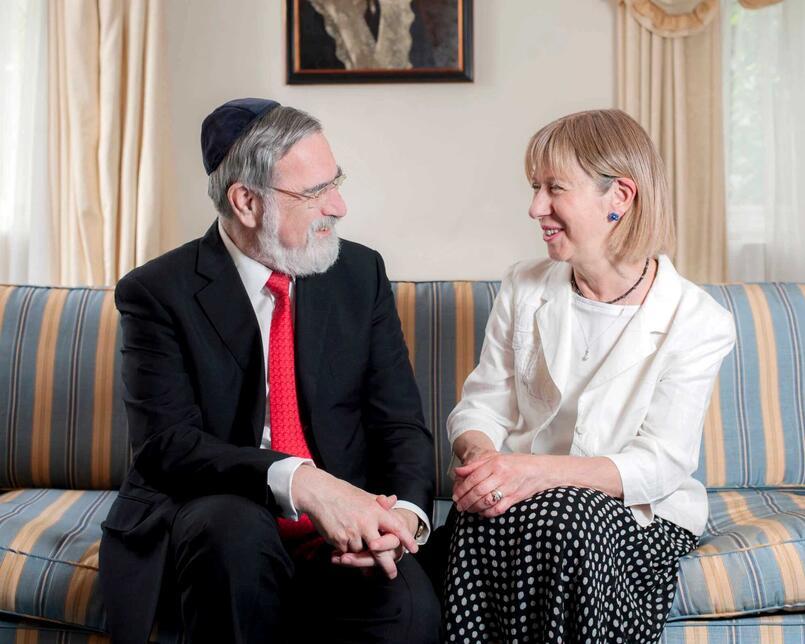Despite all the available data on Jewish life and the centrality of intermarriage to Jewish discourse, we can say little about how Jews fall in love.
Dr Keith Kahn-Harris
and test your family's knowledge of Jews worldwide while reading the Haggadah!
Dr Keith Kahn-Harris
Just six days after the sorrow of Tisha B’Av, the Jewish calendar offers Jews an opportunity for joy. Tu B’Av is our festival of love. While it’s a light holiday in terms of ritual, it’s a day propitious for weddings, proposals and romance. Tu B’av is also notable for its observance, which is mainly concentrated at the twin ends of the Jewish spectrum. For secular Israelis, it’s a kind of equivalent to Valentine’s Day; for strictly orthodox Jews, it’s more about matchmaking and arranging marriage than romantic love in the secular sense.
Tu B’Av’s joyfulness stands in stark contrast to the seriousness with which love, marriage and coupling are often discussed in Jewish communities. Or, to be more precise, how it is discussed when Jewish communal leaders and professionals discuss the future of the Jewish people.
In the 1990s, the British, American and other Diaspora Jewish communities went through a period of angst over the question of intermarriage. US figures at that time suggested that around half of US Jews were married to a non-Jewish partner. The implications of this were much debated. Whether intermarriage was seen as an existential threat to Jewish existence or as an opportunity to bring more households into Jewish life, a consensus emerged that Jewish life needed to be renewed and revitalised.
This sense of a crisis that had to be addressed was exported to the UK. In 1991, Chief Rabbi Sacks inaugurated a ‘decade of renewal’, and a new organisation, Jewish Continuity, was set up to push the process forward. As Ben Gidley and I argue in our 2010 book Turbulent Times, the renewal process had an impact beyond the United Synagogue, bringing about a more vibrant and creative British Jewish community.

Rabbi Sacks and Lady Elaine Sacks, here on their sofa at home, married in 1970
At the Institute for Jewish Policy Research, intermarriage is an essential topic for research as part of our long-term commitment to demography. One striking finding reported by JPR’s David Graham in 2016 is that the UK Jewish intermarriage rate has held steady at around 25% since the 1980s. It does not seem to have been dramatically changed by the institutional efforts to ensure Jewish renewal and continuity (then again, there is no way of knowing how much higher that rate may have been without those efforts). Graham’s research also showed that only a third of children of intermarried couples were being raised as Jews.
JPR’s research has also found that British Jews are more likely to live as part of a couple (60%) than the wider population, and 90% of those living in a couple are married or in a civil partnership. While there is no single dominant type of Jewish household, Jews are less likely to cohabit or live in single-parent families than the general population. Jews are also less likely to divorce. While such findings suggest that the majority of British Jews are capable of finding Jewish partners and building households together, stable in-marriages are not panaceas for demographic decline. As JPR’s Daniel Staetsky has shown, on a global scale, intermarriage is a less important driver of decline than Jews as a whole having children at less than ‘replacement’ rates. It stands in contrast to the fertility of strictly orthodox Jewish populations; the UK Haredi population is growing at over 4% per year).
So, how does love fit into the picture? While JPR might be able to demographically track the consequences of love and its endurance (or lack of it), the processes through which Jews do or do not form relationships are largely unexplored outside of the strictly orthodox Jewish community. It is striking that, amidst the sense of crisis about intermarriage in the 1990s, no organisation thought to commission research on Jewish love, sexuality and sexual attraction. Then, as now, we can say nothing beyond anecdotes on how Jews may or may not want to couple up.
Tu B’Av reminds us that Jews are sexual beings and that ‘love’ is an unruly emotion. It also reminds those of us who count Jews that behind every demographic statistic, the erotic lurks and will not be tamed.
Senior Research Fellow and Project Director of the European Jewish Research Archive
Senior Research Fellow and Project Director of the European Jewish Research Archive
Keith Kahn-Harris has been Project Director of the European Jewish Research Archive since its inception in 2014, managing the collection process and analysing its holdings...
Read more